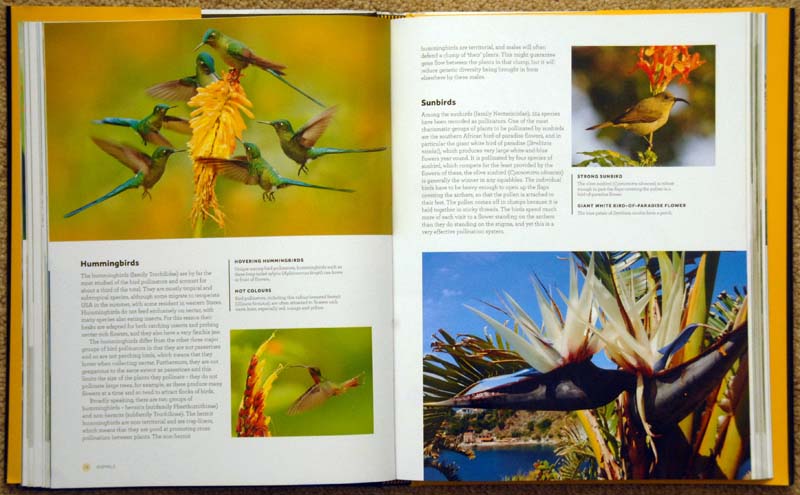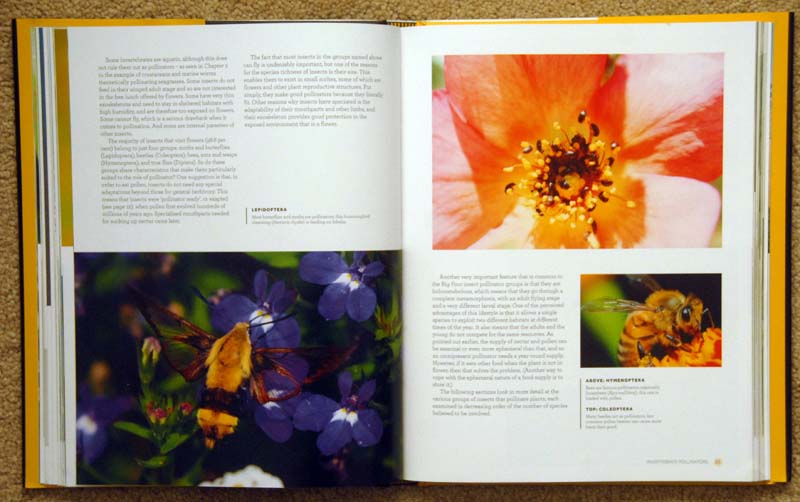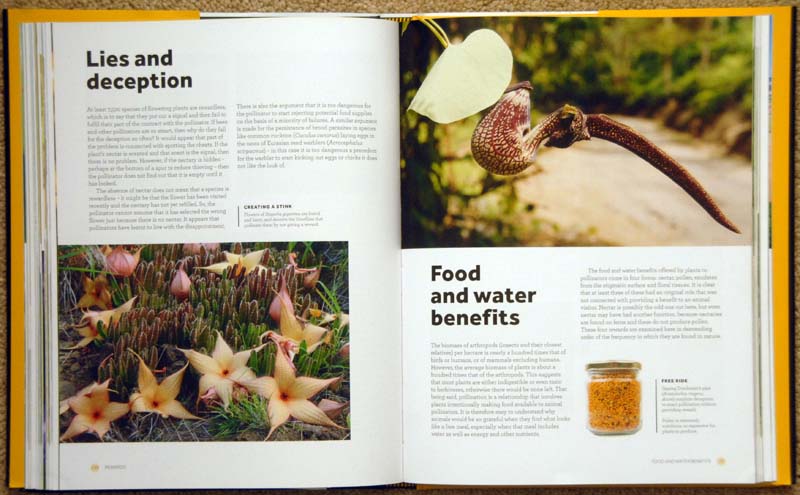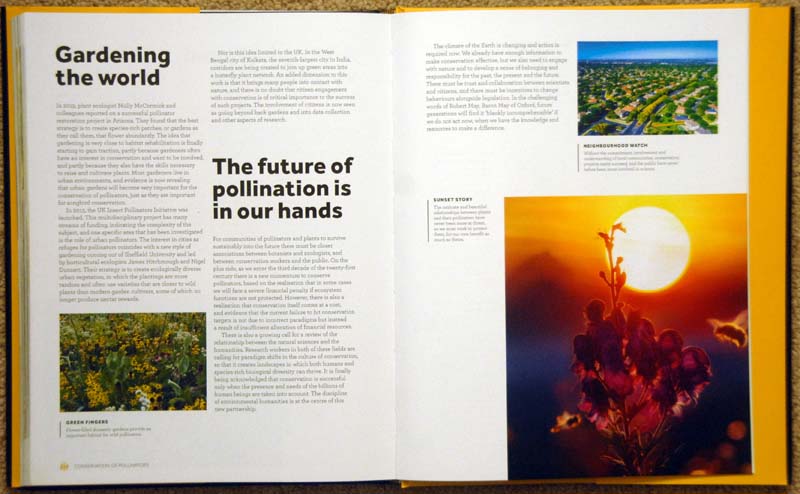Pollination
Pollination: The Enduring Relationship between Plant and Pollinator, Timothy Walker
I have a deeply held wish in my aging life that my sense of wonder and fascination at the extraordinary workings of the natural world will never leave me. Nothing makes me feel so young (despite being retired more than a few years!) as that deep enthralment one experiences when engaging with any of the many marvellous aspects of plants. In recent years this fascination has been fed and nurtured by an interest in Irish native orchids, an interest shared with a small and wonderful group of friends, and has led to an interest and appreciation of the mechanisms of pollination and the interactions between plants and pollinators.

In this context, Timothy Walker’s Pollination is a literary elixir of life, precisely the book which will reveal and explain the extraordinary mechanisms of pollination. It will appeal to those who have an interest in nature, plants, pollinators and the many diverse, fascinating, ingenious and extraordinary methods employed in the sexual life of plants – people like me, the amateur enthusiasts, and also to home gardeners, naturalists, horticulturalists and it would also be an excellent textbook for those studying at undergraduate level. “Whenever pollination is studied, sex, lies and deception are rarely far away”, says the author and that is surely subject matter which makes for interesting reading!
I have attended talks by the author on a number of occasions, expected nothing short of excellence in his book and have not been disappointed. His study of pollination is presented with a clarity of thought and organisation which makes a complex subject perfectly accessible to the non-specialist while maintaining the depth of knowledge demanded by the more specialised reader. As in his talks, there is that enviable lightness of delivery which makes this extraordinary significant material very accessible and his dry sense of humour surfaces gently along the pages. This is not a light subject, but one of frightful importance which demands clarity and reliability of information and this is what the reader will find in Timothy Walker’s ‘Pollination’, an excellent book, a wonderful resource, not always a light read but certainly a very informative and enlightening one, an indispensable handbook on pollination.
Pollination, the transference of pollen from one flower to another, might strike us as a very simple action but it regularly seems to involve the most amazing, ingenious, mind-boggling and at time convoluted arrangements, so far beyond what we might ever imagine as to almost defy belief. The relationship between pollinators and flowers is one of the most intimate in nature and, while it has been studied for centuries, it is now an area of intense interest and fierce debate – nothing sharpens the attention of scientists, economists, governments and people in general than the realisation that pollinators are in decline around the world and that their loss will impinge hugely on our lives.
The mechanics of pollination are fascinating and the more one reads of them here, the greater one’s marvel at the workings of our natural world. Wind is the pollination vector for about one eight of all plants – cereal crops, coniferous forests and the grasses of prairies and savannahs accounting for most of these – and, while pollen is not often transferred by water, some descriptions of the processes involved are quite amazing: picture a plant flowering underwater which produces a bubble of air to lift its pollen to the surface where it then floats to the receiving flower, so designed to create an eddy forcing the polled to float into it!
The vast majority of pollination is assisted by animals – bats, birds, butterflies, beetles etc. There is a total of 108 non-flying mammals recorded as effective pollinators – marsupials, rodents, primates, shrews among them but bat species, flying mammals, which act as pollinators outnumber them with 236 recorded. Birds also play their part, with 1089 noted as effective pollinators. However, 99.6% of all pollination species are invertebrates and 99.9% of these are insects, generally organised into four groups: 1: moths and butterflies, 2: beetles, 3: bees, ants and wasps, and 4: the true flies and, as might be expected, their contribution receives significant coverage in the text with examination of the methodologies employed, how plants attract insects, how insects are “rewarded” for their actions etc – all extraordinarily interesting! I will recall one snippet which fascinated me for it related to a plant with which I am familiar, Gymnadenia conopsea, the Fragrant Orchid, a native Irish orchid which I have seen on several occasions and which always delights with the beautiful smell of cloves it emits. What I hadn’t realised is that this orchid emits one fragrance during the day, which is attractive to butterflies, and a different fragrance at night which is attractive to moths – hedging its bets, so to speak!
The final chapters emphasise the importance of pollinators to people, to our wellbeing, our food supply, the aesthetics of our daily lives and the global economy with a discussion on how essential it is that we work to conserve these pollinators and – an emphasis new to me – to extend this effort beyond those pollinators identified as being directly of service to humans to include pollinators in the wild, for a loss of biodiversity will effect all aspects of the natural world as well as pollination. A whole ecosystem approach is essential.
I hope that you have taken from my words above that I have both enjoyed this book immensely and that I also regard it as a book of extraordinary relevance and importance. It veers towards the scholarly rather than another light gardening book as might be expected from a lecturer in plant science at Somerville College at the University of Oxford. The addition of a glossary of terms would have helped this amateur gardener but did not take from my enjoyment of this beautifully presented, well written and illustrated book.
[Pollination: The Enduring Relationship between Plant and Pollinator, Timothy Walker, Princeton University Press, Oxford, 2020, Hardback, 224 pages, €29.99, ISBN: 978-0-691-20375-1]






